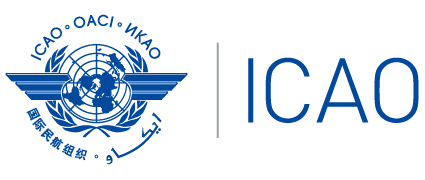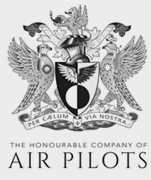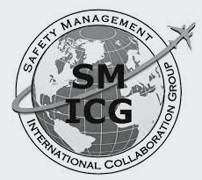CRJ9, en-route, north of Los Angeles CA USA, 2021
CRJ9, en-route, north of Los Angeles CA USA, 2021
Summary
On 29 November 2021, the crew of a Bombardier CRJ900 (C-GJZV) which had just taken off from San Diego at night were presented with a fuel imbalance indication. The imbalance slowly increased until, once level at FL340, a further annunciation indicated that the maximum permitted imbalance had been reached. Actioning the corresponding checklist did not resolve the problem so procedurally recommended shutdown of the low fuel side engine was performed followed by a MAYDAY diversion to Los Angeles. The imbalance was attributed to inadvertent crew selection of ‘gravity crossflow’ prior to takeoff instead of the immediately adjacent ‘crossflow auto override’.
Flight Details
Aircraft
Operator
Type of Flight
Public Transport (Passenger)
Flight Origin
Intended Destination
Actual Destination
Take-off Commenced
Yes
Flight Airborne
Yes
Flight Completed
Yes
Phase of Flight
Climb
Location
Approx.
North of Los Angeles
General
Tag(s)
En-route Diversion,
Inadequate Aircraft Operator Procedures,
CVR overwritten
HF
Tag(s)
Procedural non compliance
LOC
Tag(s)
Loss of Engine Power,
Flight Management Error
EPR
Tag(s)
MAYDAY declaration,
Fuel Status
Outcome
Damage or injury
No
Non-aircraft damage
No
Non-occupant Casualties
No
Off Airport Landing
No
Ditching
No
Causal Factor Group(s)
Group(s)
Aircraft Operation
Safety Recommendation(s)
Group(s)
None Made
Investigation Type
Type
Independent
Description
On 29 November 2021, a Bombardier CRJ900 (C-GJZV) being operated by Jazz Aviation on a scheduled international passenger flight from San Diego to Vancouver as JZA767 had just taken off when a fuel imbalance problem was annunciated on the EICAS. The imbalance slowly increased until, 28 minutes after takeoff, having levelled at FL340, the imbalance reached the maximum permitted quantity. Actioning the required procedure for the low fuel side was carried out and a MAYDAY diversion to Los Angeles was completed. However, when main landing gear and minor wing debris puncture damage unrelated to the en-route fuel transfer problem was seen by attending emergency services after the aircraft had stopped on the runway, all occupants were disembarked to buses and the aircraft was then towed clear of the runway.
Investigation
The Investigation was delegated to the Canadian Transportation Safety Board by the NTSB. The FDR and CVR were both removed from the aircraft and their data were successfully downloaded. However, whilst the FDR provided useful data, relevant data was not obtained from the 2 hour CVR as it had not been electrically isolated until approximately 4 hours after the aircraft landed.
The Captain had a total of 24,826 hours flying experience including 11,517 hours on type. The First Officer had a total of 20,213 hours flying experience including 7,157 hours on type. Both pilots had been employed by Jazz Aviation for several years and had flown together “numerous times”.
What Happened and Why
It was noted that the Before-Takeoff Checks had required the selection on the overhead fuel system panel of the ‘XFLOW AUTO OVERRIDE’ PBSI (Push Button Switch Indicator) to ‘MAN’. This switch is located directly below the ‘GRAVITY XFLOW’ PBSI (see the illustration below). The associated SOPs require that after this button has been pressed, the pilot acting as PM at that time should verify that the ‘MAN XFLOW’ annunciation has appeared on the EICAS and that there is no ‘GRAV XFLOW OPEN’ message displayed above the XFLOW AUTO OVERRIDE PBSI. The after-takeoff checklist then requires the XFLOW AUTO OVERRIDE PBSI to be pressed again to return it to the default AUTO (light out) position. On the flight under investigation, the XFLOW PUMP CAUTION was recorded at around the time the PM Captain was completing the After Takeoff Checks which included pressing the PBSI to return the cross flow system to automatic. The switch is then not used for the rest of a flight unless it is part of a QRH Abnormal or Emergency Checklist. It was noted that had this PBSI been inadvertently left in AUTO for takeoff, this action would have set the push-button switch to MAN (manual), instead of returning the selection to AUTO. The close timing of the XFLOW AUTO OVERRIDE PBSI position change - potentially to manual - and the appearance of the XFLOW PUMP CAUTION annunciation were, since there was no indication of a pump failure, likely to have been a false indication.

Part of the overhead fuel system panel with no selections made (left) and with XFLOW AUTO OVERRIDE’ selected (right). [Reproduced from the Official Report]
As the climb continued with the AP engaged, FDR data showed that it maintained a steady but very slight bank angle to the left of approximately 1°, an angle so small that the pilots were unlikely to have been aware of it. With the crossflow open, it was found that fuel in the left wing had “remained steady or slowly increased” as fuel in the centre tank and right wing had slightly decreased. As required by the XFLOW PUMP CAUTION message, the fuel imbalance was monitored by the crew who noted that after 17 minutes, as the aircraft passed FL 310 in the climb, the rate of right to left wing fuel transfer was in excess of 2,250kph which is only possible with the gravity crossflow open since it significantly exceeds the capability of the crossflow pump.
Eight minutes later, a ‘FUEL IMBALANCE’ caution appeared on the EICAS and the crew responded as required by acting to initiate Gravity Crossfeed Procedure. For the valve to be already open at that time, it had to have either failed (which would have been annunciated on the EICAS) or been inadvertently selected open by the crew. No mechanical faults were found with the valve and a similar event has not subsequently occurred (all EICAS annunciations are recorded).
It was therefore concluded that the only plausible scenario was that the XFLOW AUTO OVERRIDE PBSI was opened inadvertently when intending to close it and that the presence or absence of an OPEN light in the switch was not checked before cycling it. It was noted that the wording of the QRH procedures for use of fuel panel crossflow PBSIs were not helpful in that the L and R XFLOW switches were described as ‘OFF’ when their light is off because they are not pressed in but the XFLOW AUTO OVERRIDE switch is described as ‘OFF’ when it is pushed in.
In respect of how to sideslip the aircraft when this is required by the Gravity Crossfeed Procedure, the Investigation found that the operator’s QRH differed from the manufacturer’s procedure which was relevant to initiating a modest sideslip with the AP engaged. It was concluded that this had contributed to the crew being led to shut down one engine after exacerbating rather than correcting the observed fuel imbalance.
The following Findings were formally documented based upon completion of the investigative work:
Causes and Contributing Factors
- During the completion of either the before-takeoff or after-takeoff checklists, it is likely that the flight crew inadvertently pressed the gravity crossflow push-button switch instead of the co-located crossflow auto override push-button switch. As a result, during the flight, fuel periodically transferred between the aircraft’s wing tanks by gravity when the aircraft was banked left or right, leading to a worsening fuel imbalance condition.
- While operating at night with the autopilot on, the aircraft was placed in a sideslip toward the wing tank with the greater quantity of fuel, and this opposite bank was not recognised by the flight crew. As a result, the lateral fuel imbalance was not controlled and continued to increase.
- The fuel imbalance led the flight crew to declare an emergency and divert to a nearby airport for an emergency landing.
- The checklists did not require the flight crew to close the gravity crossflow valve following the attempted Gravity Crossfeed Procedure. As a result, the open valve occasionally made the fuel imbalance worse during the subsequent manoeuvring and (it) was at one point more than 3 times the maximum permissible.
Risk Factors (Safety deficiencies which were assessed not to have been a factor in this occurrence but could be in future ones)
- When the wording in a checklist is ambiguous or unclear, or when the wording in an operator’s checklist differs from that in the checklist provided by the manufacturer, a flight crew may, in an effort to correct an abnormal or emergency condition, conduct procedures in ways not intended by the manufacturer, increasing the risk of entering into an undesired aircraft state.
Safety Action taken by Jazz Aviation as a result of the investigated event was noted as having included changes to the CRJ 900 QRH Gravity Crossfeed Procedure to add concise wording on how to initiate a sideslip and require that the autopilot must be disengaged as part of the procedure.
Editor’s Note: Unrelated to the runway edge takeoff except that the same flight crew were also the unintended initiators of it, the same flight then encountered a fuel imbalance problem which, because it was not appropriately managed, led to an en-route diversion. As both events occurred during the same flight, the separate investigations of both events were published in a single report. A concise summary of the other event is provided separately here.
The Final Report of the Investigation was authorised for release on 22 May 2024 and officially released on 5 July 2024. No Safety Recommendations were made.






